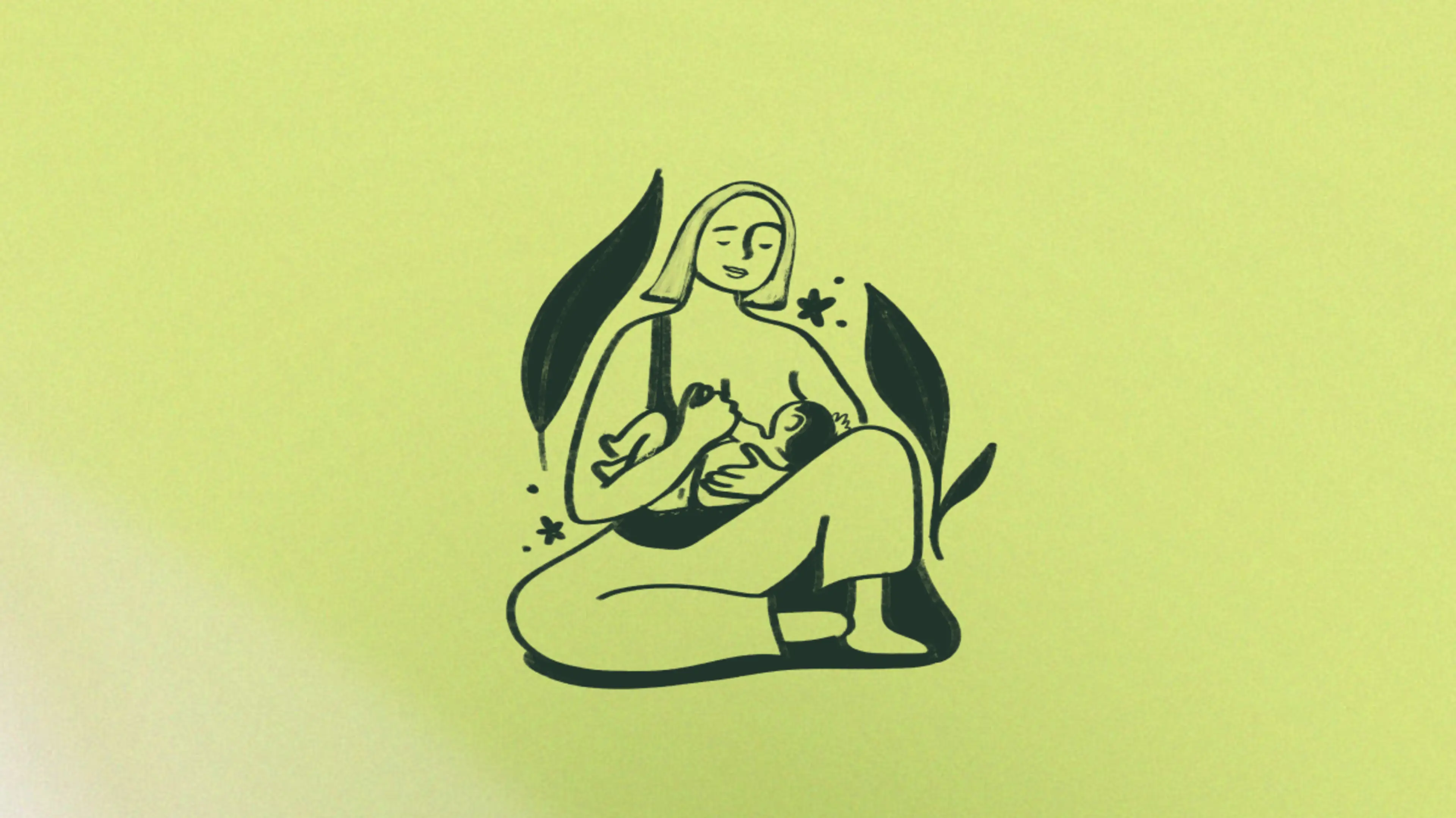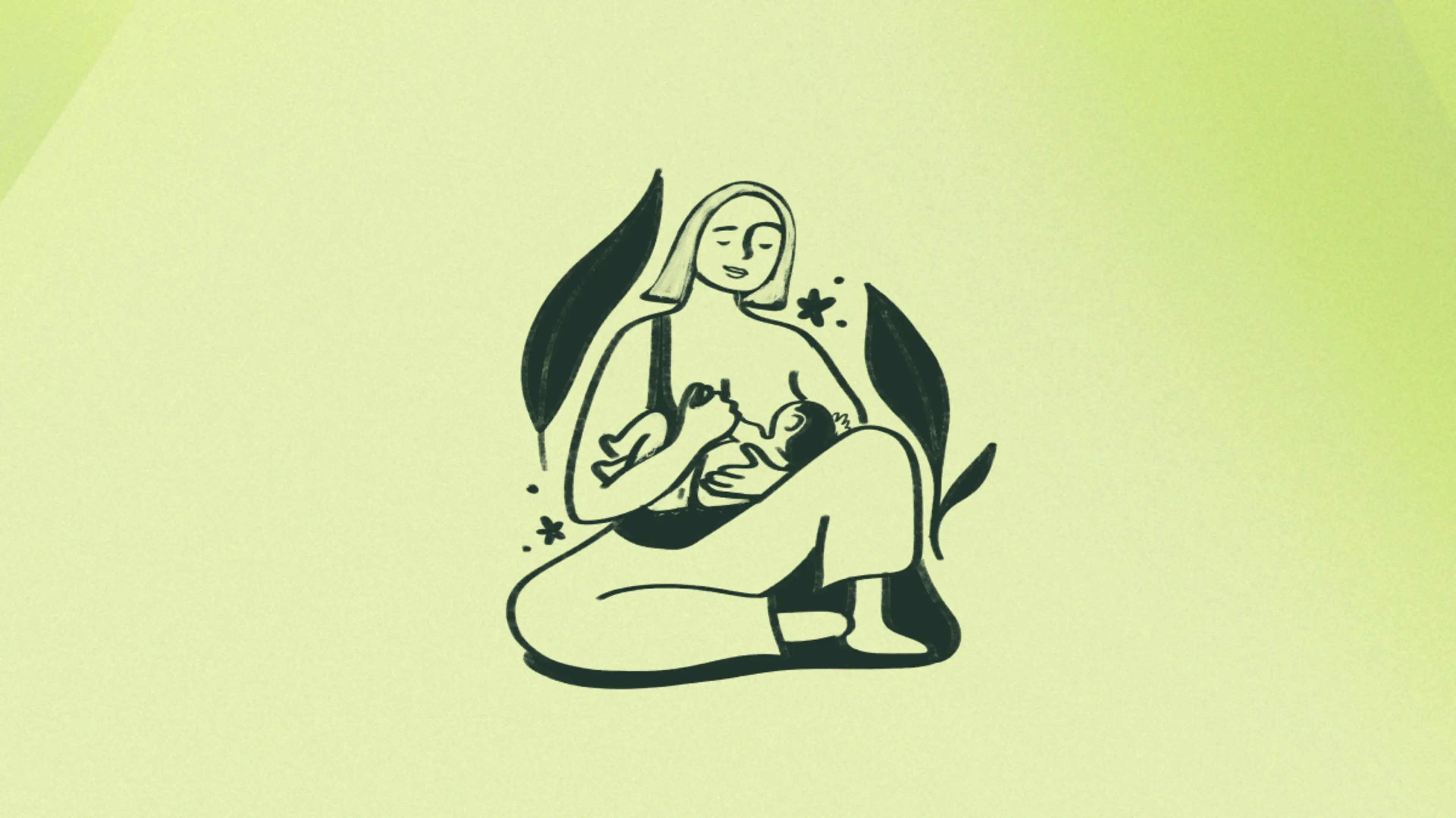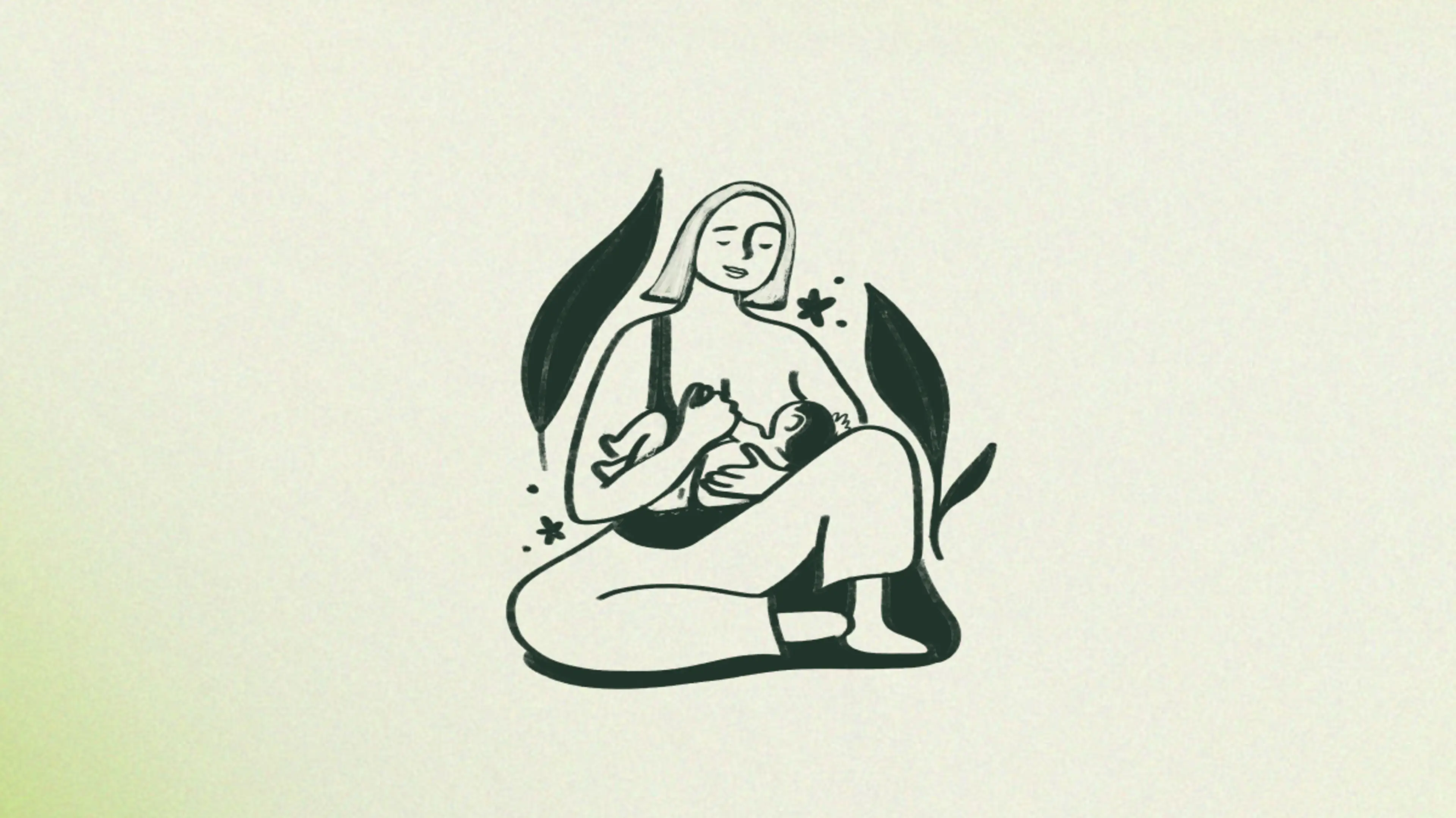TLDR: When you decide to stop breastfeeding your baby, there are steps you can take to reduce your milk production in a gradual, healthy way. However, if you have to wean quickly, we have guidance for that, too. Whatever your transition looks like, this guide will help you handle it with comfort and confidence.
Breastfeeding can be a wonderful chapter in your life with your new baby. But once you hit a certain point, you may be asking yourself, how do I stop? Or, when is the best time to stop?
Whether you need to quit nursing quickly or you have the time to end more gradually, we have guidance for the best way for you to sunset this practice. Just keep in mind that this transition looks different for everyone, so do what is best for you and your baby. You don’t need to compare yourself to other moms—what works for one may not work for others.
The most important thing to remember before we get into the nuts and bolts of the process is that weaning is not just physical–there’s also an emotional component. Lactation consultant Carrie Dean1 advises moms to not underestimate how weaning may affect them emotionally.
“Breastfeeding can be a deeply special bond between parent and baby," she says. "Some parents are ready for the space from breastfeeding, and some folks may be surprised by how much they miss it and the emotional impact it can have.”
She adds that you don't have to quit cold turkey. “Continuing on with just one nursing session a day is a nice option for those not quite ready to fully wean.”
Here is what you need to know to be prepared for both the physical and mental aspects of weaning.
When Is the Right Time To Stop Breastfeeding?
There is no “right time” to stop breastfeeding. The American Academy of Pediatrics recommends exclusively breastfeeding for the first six months2 of your baby’s life, which is around the same time that you start to introduce solids. However, both AAP and the World Health Organization recommend breastfeeding (though not exclusively) for two years to get the maximum benefits, while also acknowledging that many nursing moms don’t have the support they need to achieve this goal.
If you’re curious about what other parents do, about 58% of moms breastfeed for six months3 , while 36% percent reach 12 months, according to the March of Dimes.
Generally, if there are no circumstances that cause you to stop breastfeeding quickly, you can make the call as to when it’s the right time to stop for you and your baby.
How to Stop Breastfeeding Quickly
Gradually weaning over time is the usual advice4 , as it helps reduce the risks of engorgement, clogged ducts, or an infection like mastitis.
That being said, there are many reasons you might need to stop breastfeeding quickly. You may have an illness, begin taking a medication that’s not safe for breastfeeding, or it might be the best decision for your mental health or lifestyle.
If you need to stop breastfeeding quickly, follow these tips to help reduce your discomfort and risk of infection. Note: If you notice a red wedge-shaped pattern on your breast, a painful or burning sensation, you feel ill, and you have a fever of over 101 degrees Fahrenheit, call your doctor right away. You may have mastitis, which is an infection in the breast tissue. Your doctor will likely prescribe an antibiotic.
Be prepared before you wean
When you decide to wean, make sure you’re prepared to switch your baby’s food. If your baby is under a year, they’ll need formula or expressed breast milk in storage.
You will also need to buy bottles and make sure your baby will take one if you haven’t used them yet. It’s a good idea to have different types and brands of bottles on hand to try since some babies can be picky about what they’ll take. Making sure you’re prepared before weaning can help the process be less stressful for both you and your baby.
Enlist support
Having support from your partner, family, or friends can also be helpful. Babies can smell their mom’s breast milk, so sometimes when mom tries to feed them a bottle, they may refuse it. Letting a loved one take over feedings may help your baby transition to the bottle more easily.
Use cabbage leaves and ice packs
Depending on when you wean, your breasts may get engorged and sore. Engorgement is when your breasts are uncomfortable and overfilled with milk.
Cold cabbage leaves on the breasts can help reduce the pain5 and inflammation associated with engorgement. No cabbage? Try a good old ice pack to help reduce any discomfort and to stop the production of milk.
Express only enough milk to be comfortable
If you’re painfully engorged, you can express milk but only enough to help ease your discomfort. Your breasts make milk based on supply and demand due to something called the feedback inhibitor of lactation7 . The fuller your breast is, the less the FIL will activate to make more milk. The more milk you express, the more the FIL will start to make more milk.
Hand expressing may be your best option so you don’t overexpress. An easy way to do this is in a warm shower—the warm water helps to release the milk. After standing under the warm water for a few minutes, begin to gently hand express.
If you don’t have time for a shower, you can also use a warm washcloth to help release the milk before you express. If you aren’t able to hand express (it can be difficult to do, so don’t worry if this technique is not for you), use your pump. Just make sure to pump enough to reduce your discomfort and then stop.
Wear a supportive bra
While you’re weaning, your breasts can feel full and heavy. Wearing a supportive bra can help give your breasts some additional support. Keep in mind that supportive is not the same thing as tight. A tight bra can cause clogged milk ducts, which can lead to infection.
Try herbs that reduce breast milk
Some herbs are effective at reducing the amount of breast milk8 and may help your milk dry up faster. Sage, peppermint, and parsley are all herbs that can help you wean.
You can make yourself a cup of warm peppermint tea, add parsley to your next smoothie, or add sage to a pasta dish to boost its flavor. Conversely, you’ll want to avoid these herbs in large amounts if you don’t want to affect your supply.
Be patient with yourself
Weaning your baby can be an emotional time, especially if your reason for doing so is out of your control. Be patient with yourself and make sure to set aside time for you to process your feelings.
Meditation is a great way to help you deal with the emotional aspect of this transition. Whatever your reason for stopping breastfeeding, trust in yourself that it is the best decision for you and your baby.
How to Stop Breastfeeding Gradually
If the time has come for you and your baby to begin weaning, and you can do it gradually, there are a few different ways to get started.
When you stop breastfeeding steadily, your breasts have a chance to slowly make shifts in milk production. The FIL will learn to make less and less milk as your baby drinks less. This can help to eliminate some of the risks for engorgement, clogged ducts, or mastitis. A gradual reduction in breastfeeding can also take less of an emotional toll.
If your baby is under a year old, make sure they’re still getting the recommended amount of milk during the day. You may need to supplement with formula or expressed breast milk as you take away and shorten feedings. By six months, they’re also able to eat some solid food, as well.
Make feeding times shorter
One way to gradually stop breastfeeding is to make feedings shorter. If your little one usually nurses for 10 minutes on each breast, lower it to eight minutes or so. This will help your breasts learn to make less milk between each feeding.
By slowly reducing the duration of each feeding, your baby probably will not notice the change and will finish their shorter session just as happy. You can choose to reduce the feeding times for every nursing session, or start with one and work your way to the others.
Drop one feeding at a time
Another way to stop breastfeeding gradually is to cut out one feeding at a time. For this technique, start with the least favorite feeding—or maybe the one the baby really doesn’t seem interested in. Maybe it’s the mid-morning meal that your baby would rather just play through. Skip that feeding for a few days.
Once you feel you’re both ready to drop another feeding, pick the next least favorite and drop it. You should allow a few days in between dropping each feeding. Eventually, you’ll stop breastfeeding altogether.
Try baby-led weaning
Another way to stop breastfeeding is by leaving it up to your baby. This method is called baby-led weaning, and it allows your baby to initiate when they’re ready to reduce feedings or give up breastfeeding altogether. When you’re relying on this type of weaning alone, nursing usually stops when your child is between two and four years old.
Babies will gradually drop certain feedings. They’ll eventually be able to sleep through the night, for example, eliminating those nighttime feedings. If you normally nurse five times a day, they may cut it down to four for a while, then to three.
Usually, toddlers older than 18 months nurse one to three times a day, and sometimes more if they’re not feeling well.
How Long Does It Take to Stop Producing Milk?
There are a few things that impact how long it may take your breasts to stop producing milk. The two biggest factors are your baby’s age and how much milk your body naturally makes. The more milk you make, the longer it may take to stop producing.
“How much milk you are making will determine how quickly you can wean," says Dean. "The body needs time to adjust to the new demand.”
Some women may need only a few days to stop producing milk. For others, it may take a few weeks. Remember to be patient with yourself through this change. You may also feel the letdown sensation, or even leaking, for a few months after you finish nursing. You may want to use nursing pads in your bra in case you have an accidental leak.
How to Stop Breastfeeding at Night
If you’re getting up multiple times a night to nurse, and your baby is over four months old, you may be able to wean those nighttime feedings. Gradual weaning is still recommended, even at night. You can use both techniques of making the feedings shorter and dropping one feeding at a time.
As you reduce your feedings, you may need to ask your partner to comfort your baby if they wake up during their normal feeding time. Your baby will likely smell you and expect to be nursed, which can upset them more if they’re not given the breast.
Over time, your baby will get used to not eating through the night. Increasing the amount of milk, and then solid food once they’re older, can help lessen the need for nighttime feedings.
Do I Have to Stop Breastfeeding to Get Pregnant?
Breastfeeding can work as contraception only if your period hasn’t returned and your baby is exclusively breastfed and younger than six months. If all three of these stipulations are true, you may not be able to get pregnant.
If all those circumstances aren’t met, then you may be able to become pregnant—especially if your period has returned. Plenty of women nurse throughout their next pregnancy.
If you get pregnant while nursing, some babies will wean themselves because pregnancy hormones can change the taste of your milk. If you’re concerned about nursing while you are pregnant, talk to your doctor or midwife about any specific questions you have.
In the End, It’s Up to You
Knowing when to stop breastfeeding is a very personal decision. You know what’s best for both you and your baby. While gradually weaning can be easier for you and your baby, sometimes it’s not an option. In the end, choose what is right for you and your baby, and make sure to get the help you need during this transition.








